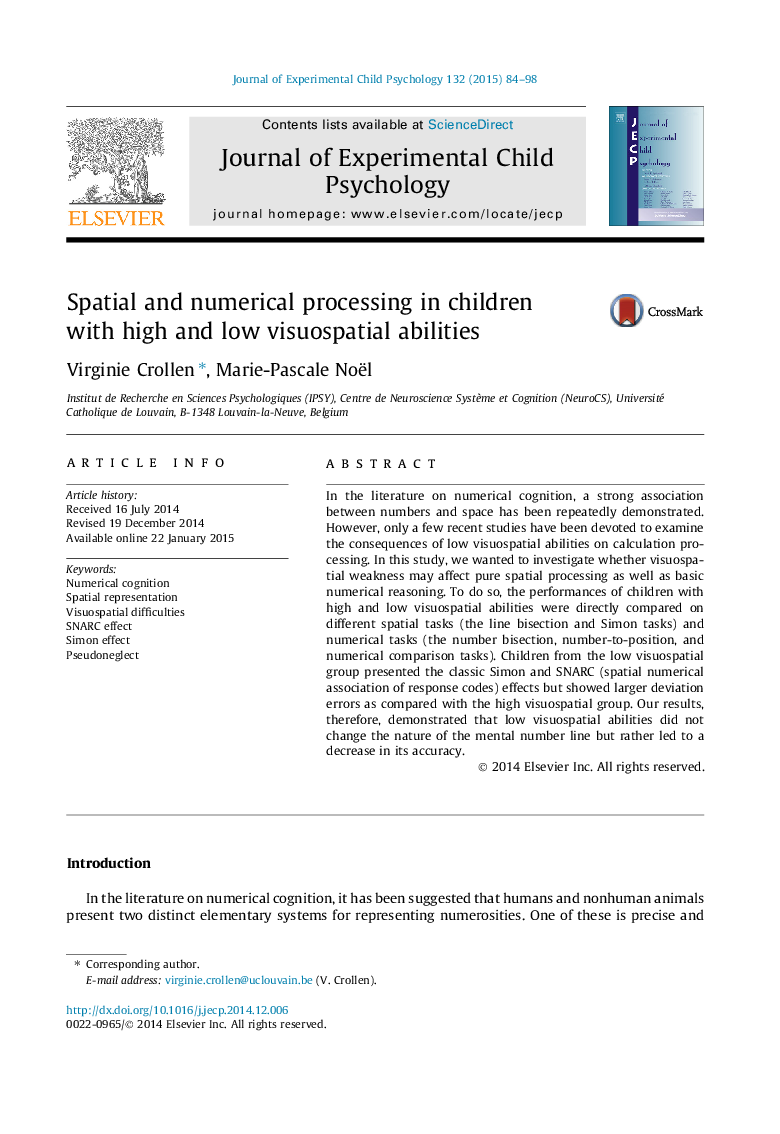| Article ID | Journal | Published Year | Pages | File Type |
|---|---|---|---|---|
| 917978 | Journal of Experimental Child Psychology | 2015 | 15 Pages |
•A strong association between numbers and space has been repeatedly demonstrated.•This paper investigates whether visuo-spatial weakness affects basic numerical reasoning.•Spatial and numerical performances of children with high and low visuo-spatial abilities were compared.•Low visuo-spatial abilities did not change the nature of the mental number line.•Low visuo-spatial abilities rather led to a decrease in the mental number line’s accuracy.
In the literature on numerical cognition, a strong association between numbers and space has been repeatedly demonstrated. However, only a few recent studies have been devoted to examine the consequences of low visuospatial abilities on calculation processing. In this study, we wanted to investigate whether visuospatial weakness may affect pure spatial processing as well as basic numerical reasoning. To do so, the performances of children with high and low visuospatial abilities were directly compared on different spatial tasks (the line bisection and Simon tasks) and numerical tasks (the number bisection, number-to-position, and numerical comparison tasks). Children from the low visuospatial group presented the classic Simon and SNARC (spatial numerical association of response codes) effects but showed larger deviation errors as compared with the high visuospatial group. Our results, therefore, demonstrated that low visuospatial abilities did not change the nature of the mental number line but rather led to a decrease in its accuracy.
